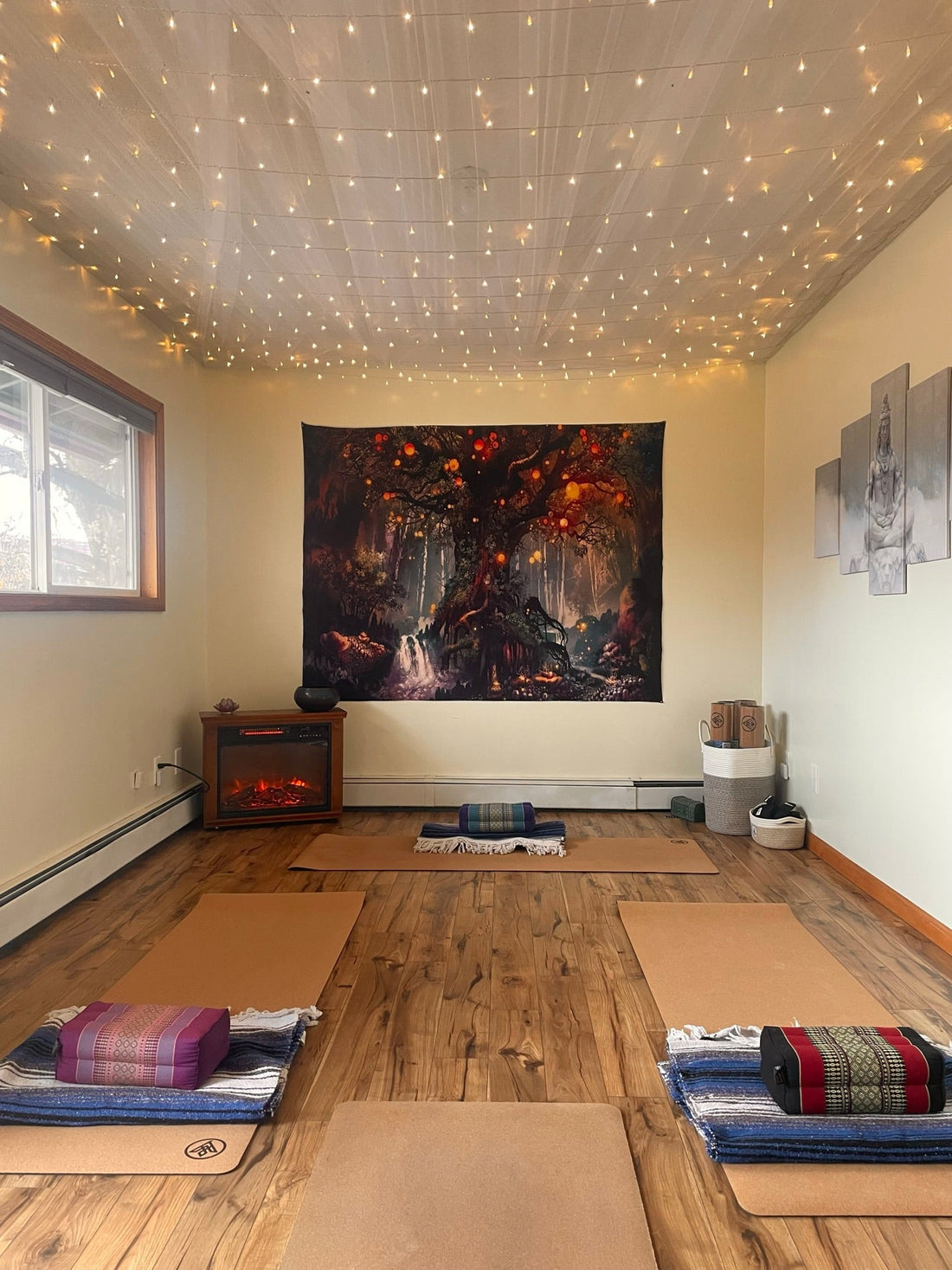
At-Home Yoga Studio: A Step-by-Step Guide
Jack UtermoehlShare
As a yoga teacher, you know the importance of having a dedicated space for your practice and for teaching classes. Building a home yoga studio can not only provide a comfortable and personalized space for your own practice, but it can also be a valuable asset for your teaching business.
Whether you're looking to practice at home, teach classes from home, teach your own students in a private setting, or even lay the foundation for a future studio, this guide will walk you through the process of creating your own home yoga studio.
Choosing the Right Room
When selecting the room for your home yoga studio, think about your needs for yourself, your students, and your teaching style. A room that is large enough to accommodate a group of students and your props, such as mats, bolsters, blankets and blocks, is essential. Additionally, ensure the room is well-ventilated and has plenty of natural light to create a comfortable and inviting environment for yourself or your students.
Planning the Layout
Once you have chosen the room, it's time to plan the layout. Think about the flow of the space, and how you want to arrange your students' mats and props. Consider the placement of any mirrors, speakers or other equipment you may need for your classes. Also, make sure that the layout is functional and easy to navigate for both you and your students.
Creating a Peaceful Atmosphere
Creating a peaceful atmosphere is key to a successful home yoga studio. Think about the colors, textures and materials that will help create a calming and serene environment for your students. You may want to add plants, candles, or artwork to bring a sense of nature and tranquility to the room. Remember, this space is for you and your students, so make sure it reflects your teaching style and the atmosphere you want to create.
Investing in Quality Equipment
As a yoga teacher, investing in quality equipment is essential. Consider what props you will need to for your style of yoga. Think blocks, bolsters, blankets, straps, and more specialized props. If you are teaching students, you will want to make sure you have enough mats for each spot in your studio.
One of the best options to consider is Asivana cork yoga mats, blocks and straps. These products are eco-friendly, durable, and provide a comfortable and slip-resistant surface for your students. Additionally, their cork material is known for its anti-bacterial properties and superior grip, making it an ideal material for yoga practice. Not only are you investing in quality equipment that will last, but you'll also be doing your part in supporting environmentally conscious products.
Also, ensure you have enough equipment to accommodate your class size. Remember, investing in quality equipment upfront will save you money in the long run and make your classes more enjoyable for your students.
Adding Your Personal Touch
Personalizing your home yoga studio is an important step to make it feel like your own. You can use posters, tapestries, or any other decorative items to make the space feel like your own. You can also consider adding a small altar or shrine to your home studio to help you connect with your spiritual practice and create a sense of community for your students. This will make the space feel more personal and meaningful to you and your students.
Creating a Focal Point
Having a focal point in your home studio is a great way to focus your students' minds during the class. It could be an altar, a painting, or a picture that you find inspiring. It could also be a simple collection of objects that you find meaningful, like crystals or shells. This focal point will help you to connect with your spiritual practice and bring a sense of peace and tranquility to the space.
Considering Practical Aspects
When creating your home yoga studio, it's important to consider the practical aspects of the space. Make sure you have the necessary equipment to play music or guided meditations during your classes. Also, ensure there is enough storage space for your mat and props. This will help make your classes more efficient and enjoyable for you and your students. Additionally, consider adding a small table or shelf for your phone or tablet to play your music or guided meditations.
Enjoying Your New Space
Remember that the most important aspect of your home yoga studio is that it is a space that makes you and your students feel good. It's a place where you can go to relax, breathe and connect with yourself and your students. Take your time and make it a space that feels special to you. Once you have completed the steps, take a moment to appreciate the space you have created and enjoy your new home yoga studio.
"Building a home yoga studio is an exciting and rewarding experience"
Building a home yoga studio is an exciting and rewarding experience. Not only will it provide a comfortable and personalized space for your own practice, but it can also be a valuable asset for your teaching business. By following this guide, you'll be able to manifest a peaceful and functional space that is tailored to your specific needs and preferences.
With the right equipment, atmosphere, and personal touches, you can create a beautiful and inviting space for yourself and your students. Investing in quality equipment such as Asivana cork yoga mats, blocks, and straps not only ensure you have a comfortable and safe practice but also support environmentally sustainable products. Embrace the opportunity to design your dream yoga studio at home, and enjoy the benefits that come with it.









